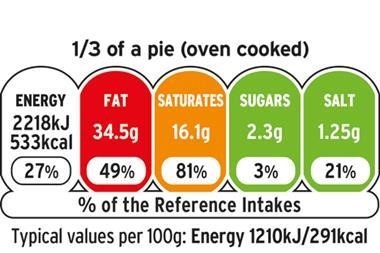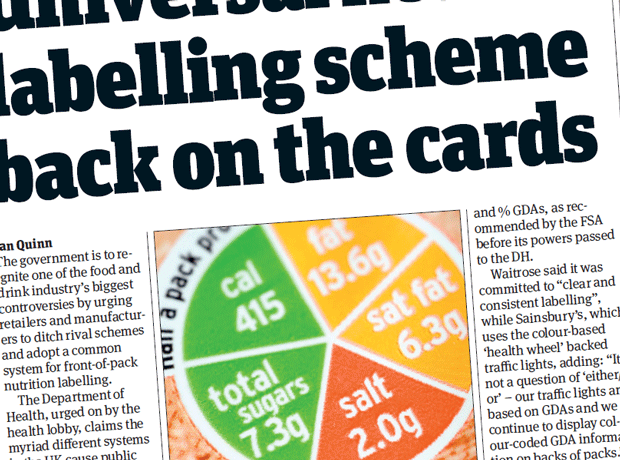
Industry leaders and health groups have reacted to the government’s new front-of-pack labelling system, designed to give consumers clearer guidance on the nutritional content of food products.
The voluntary scheme has the backing of all the major supermarkets and companies such as PepsiCo and Nestlé, and the government says it will cut down on shopper confusion when faced with different labels.
However, some companies, including United Biscuits (UB) and Cadbury, have held back from joining the scheme.
UB, maker of McVitie’s and Jacob’s, said it was “fully committed” to providing consumers with nutritional information in the form of Guideline Daily Amount (GDA) icons, but that it preferred to give information per biscuit, rather than per 100g, as under the government’s system.
“The colour scheme is based on 100g, which is the same as seven digestives. Very few people would eat that many at a time”
United Biscuits
“The colour scheme is based on 100g, which is the same as seven digestives. Very few people would eat that many at a time. We believe that consumers want information based on what they are actually eating,” said a spokesman.
“We will study the full details of the government’s scheme now that it has been published. We also understand that the government is still conducting research into the hybrid labelling system.”
Mondelēz, owners of Cadbury, said it had been providing nutritional information to consumers since 2006, adding that it had been a pioneer of the current GDA scheme.
“We have seen the new scheme proposed by the government and are currently reviewing the details,” a spokesman said.
Director general of the Food and Drink Federation, Melanie Leech, said it supported greater consistency in labelling, but that its members would need to weigh up the costs of implementation.
“Now that the UK governments’ recommended scheme has been published our members will be considering these factors and the costs involved (particularly for our SME members) as they move towards a decision on whether and when to adopt the scheme,” she said.
‘First-class scheme’
Health groups, including the British Heart Foundation (BHF), welcomed the government’s proposals.
“This is undeniably a first-class scheme that will make it easier for shoppers to scan the shelves and make more informed choices about what’s going in their trolley,” said BHF CEO Simon Gillespie.
Read this
New labelling system could bump sugary products from red to amber
An ‘unintended consequence’ of the government’s new front-of-pack labelling system will mean many products that would have had a red light for sugar levels under previous FSA guidelines will qualify for an amber instead, it has emerged.
The Children’s Food Campaign said it was “delighted” with the launch and urged food manufacturers to implement the scheme as soon as possible. “There are now no excuses – all food companies should follow suit and the government should name and shame any which drag their feet,” said Children’s Food Campaign director, Charlie Powell.
Diabetes UK’s head of policy, Robin Hewings, said the system was “an important step” in the effort to reduce the number of people who were overweight or obese, as it would provide them with clear information on food.

“However, EU law requires a voluntary approach, which means that there are still large parts of the food market not covered by traffic-light labelling,” he added. “We want to see all retailers and food manufacturers adopting the recommended labelling scheme and actively promoting it as a way for people to make healthier eating choices.”
Labels ‘work for shoppers’
A new study published today by The Co-operative Group found that 70% of women claim to look at food labels before buying, compared to 48% of men. Some 41% of women and 30% of men in the survey of 2,000 people said that red traffic lights had stopped them from purchasing a product because it contained too much fat, salt or sugar.
“It’s interesting to see that 41% of women and 30% of men would leave a product on the shelf if it had a ‘red’ traffic light – proving that this easy-to-check scheme really works for shoppers,” said The Co-operative Food’s diet and health manager, Janet Taylor.
“We believe the new consistent labelling scheme will make it easier for shoppers to make healthier choices for themselves and their families. However, for this to succeed, it’s essential that the food industry as a whole, including manufacturers, adopts this approach.”
Earlier today, Sainsbury’s CEO Justin King called on others in the food industry to get behind the scheme, describing it as a “once-in-a-lifetime opportunity”.














No comments yet